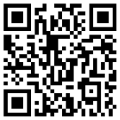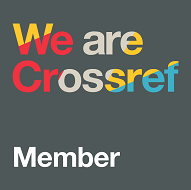Gamification-based Mobile Learning Development for Vocational High School Student Software Modeling Learning
Abstract
Full Text:
PDFReferences
J. B. Romano Daba, Y. Rosmansyah, and B. Dabarsyah, “Problem-Based Learning Using Gamification: A Systematic Literature Review,” in Proceedings - 1st International Conference on Informatics, Multimedia, Cyber and Information System, ICIMCIS 2019, Institute of Electrical and Electronics Engineers Inc., Oct. 2019, pp. 125–130. doi: 10.1109/ICIMCIS48181.2019.8985216.
S. A. Licorish, H. E. Owen, B. Daniel, and J. L. George, “Students’ perception of Kahoot!’s influence on teaching and learning,” Res. Pract. Technol. Enhanc. Learn., vol. 13, no. 1, pp. 1–23, Dec. 2018, doi: 10.1186/s41039-018-0078-8.
H. Li, M. Y. P. Peng, M. Yang, and C. C. Chen, “Exploring the Influence of Learning Motivation and Socioeconomic Status on College Students’ Learning Outcomes Using Self-Determination Theory,” Front. Psychol., vol. 11, p. 520709, Jul. 2020, doi: 10.3389/fpsyg.2020.00849.
L. K. Fryer and H. N. Bovee, “Supporting students’ motivation for e-learning: Teachers matter on and offline,” Internet High. Educ., vol. 30, pp. 21–29, Jul. 2016, doi: 10.1016/j.iheduc.2016.03.003.
C. M. Chen, H. Liu, and H. Bin Huang, “Effects of a mobile game-based English vocabulary learning app on learners’ perceptions and learning performance: A case study of Taiwanese EFL learners,” ReCALL, vol. 31, no. 2, pp. 170–188, May 2019, doi: 10.1017/S0958344018000228.
W. N. Hidayat, S. Patmanthara, S. M. Tosepu, T. A. Sutikno, and R. Wakhidah, “Gamified Mobile Learning for Digital Business Model Course,” in ICRACOS 2021 - 2021 3rd International Conference on Research and Academic Community Services: Sustainable Innovation in Research and Community Services for Better Quality of Life towards Society 5, Institute of Electrical and Electronics Engineers Inc., 2021, pp. 290–295. doi: 10.1109/ICRACOS53680.2021.9702057.
P. Buckley and E. Doyle, “Gamification and student motivation,” Interact. Learn. Environ., vol. 24, no. 6, pp. 1162–1175, Aug. 2016, doi: 10.1080/10494820.2014.964263.
G. P. Mahapatra, N. Bhullar, and P. Gupta, “Gen Z: An Emerging Phenomenon,” NHRD Netw. J., vol. 15, no. 2, pp. 246–256, Apr. 2022, doi: 10.1177/26314541221077137.
R. S. Pratama Putra Husmildin, H. Ar Rosyid, and H. Elmunsyah, “Developing Gamified Mobile Learning to Increase Student Motivation to Learn WAN Technology for Vocational High School Students,” in 4th International Conference on Vocational Education and Training, ICOVET 2020, Institute of Electrical and Electronics Engineers Inc., Sep. 2020, pp. 218–222. doi: 10.1109/ICOVET50258.2020.9229957.
I. Suprianto, F. Pradana, and F. Abdurrachman Bachtiar, “Pengembangan Aplikasi E-Learning Dengan Menerapkan Metode Gamification,” J. Pengemb. Teknol. Inf. dan Ilmu Komput., vol. 3, no. 2, pp. 1716–1724, 2019.
C. H. Su and C. H. Cheng, “A mobile gamification learning system for improving the learning motivation and achievements,” J. Comput. Assist. Learn., vol. 31, no. 3, pp. 268–286, Jun. 2015, doi: 10.1111/jcal.12088.
M. S. Kuo and T. Y. Chuang, “How gamification motivates visits and engagement for online academic dissemination - An empirical study,” Comput. Human Behav., vol. 55, pp. 16–27, Feb. 2016, doi: 10.1016/j.chb.2015.08.025.
H. Jusuf, “Penggunaan Gamifikasi dalam Proses Pembelajaran,” J. TICOM, vol. 5, no. 1, pp. 1–6, 2016, [Online]. Available: https://media.neliti.com/media/publications/92772-ID-penggunaan-gamifikasi-dalam-proses-pembe.pdf
S. Wardana and E. M. Sagoro, “Implementasi Gamifikasi berbantu Media Kahoot untuk Meningkatkan Aktivitas Belajar, Motivasi Belajar, dan Hasil Belajar Jurnal Penyesuaian Siswa Kelas X Akuntansi 3 di SMK Koperasi Yogyakarta Tahun Ajaran 2018/2019,” J. Pendidik. Akunt. Indones., vol. 17, no. 2, pp. 46–57, Dec. 2019, doi: 10.21831/jpai.v17i2.28693.
M. Fauzi, A. Teddyyana, and D. Enda, “Pengembangan Aplikasi Mobile Tanggap Bencana Di Kab. Bengkalis Menggunakan Framework Flutter,” Zo. J. Sist. Inf., vol. 3, no. 1, pp. 27–36, 2021, doi: 10.31849/zn.v3i1.5856.
R. M. Branch, Instructional design: The ADDIE approach. Springer US, 2010. doi: 10.1007/978-0-387-09506-6.
G. M. Chans and M. Portuguez Castro, “Gamification as a strategy to increase motivation and engagement in higher education chemistry students,” Computers, vol. 10, no. 10, p. 132, Oct. 2021, doi: 10.3390/computers10100132.
E. S. Rivera and C. L. P. Garden, “Gamification for student engagement: a framework,” J. Furth. High. Educ., vol. 45, no. 7, pp. 999–1012, Aug. 2021, doi: 10.1080/0309877X.2021.1875201.
K. Welbers, E. A. Konijn, C. Burgers, A. B. de Vaate, A. Eden, and B. C. Brugman, “Gamification as a tool for engaging student learning: A field experiment with a gamified app,” E-Learning Digit. Media, vol. 16, no. 2, pp. 92–109, Mar. 2019, doi: 10.1177/2042753018818342.
R. Smiderle, S. J. Rigo, L. B. Marques, J. A. Peçanha de Miranda Coelho, and P. A. Jaques, “The impact of gamification on students’ learning, engagement and behavior based on their personality traits,” Smart Learn. Environ., vol. 7, no. 1, pp. 1–11, Dec. 2020, doi: 10.1186/s40561-019-0098-x.
DOI: http://dx.doi.org/10.17977/um010v6i22023p%25p
Refbacks
- There are currently no refbacks.
 | Letters in Information Technology Education (LITE) |

1.png)
1.png)
4.png)
1.png)
.png)
.png)

3.png)
1.png)
1.png)

3.jpg)